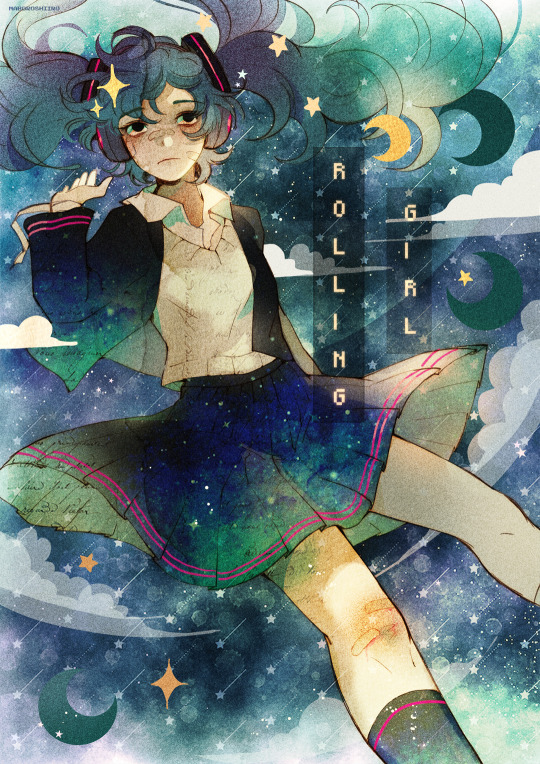Mahou Shoujo ni Naritai ~Nonnotaku Stuff~: My tumblr only for otaku stuff.
Don't wanna be here? Send us removal request.
Text


unknown forces compelled me to draw this
58K notes
·
View notes
Text

















Oniisama e…
1991
Directed by 出﨑 統 Dezaki Osamu
9 notes
·
View notes
Text

















Oniisama e…
1991
Directed by 出﨑 統 Dezaki Osamu
30 notes
·
View notes
Text


















Oniisama e…
1991
Directed by 出﨑 統 Dezaki Osamu
12 notes
·
View notes
Text















Oniisama e…
1991
Directed by 出﨑 統 Dezaki Osamu
41 notes
·
View notes
Text
池田理代子 Riyoko Ikeda Interview About Oniisama E... (2016)

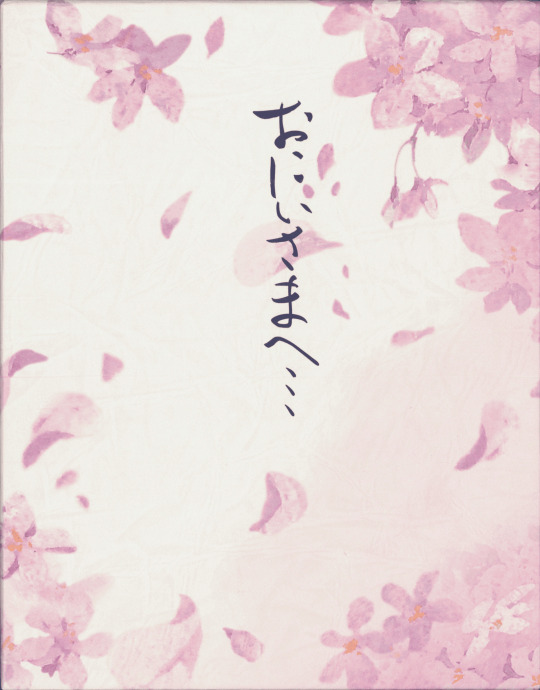
池田理代子 Riyoko Ikeda
Mangaka and Vocal artist, she began drawing mangas during her university studies, and her work The Rose of Versailles, serialized in 1972, became a huge success, even turning into a social phenomenon. She became highly appreciated internationally. She received the Excellence Award from the Japanese Cartoonists Association for Orpheus no Mado in 1980. The French government decorated her with the Légion d’Honneur for her contributions to spreading French history and culture in Japan.
What led to the creation of Oniisama E... ?
When the serialization of The Rose of Versailles ended, I had already decided that my next work would be a historical epic : Orpheus no Mado. But since it would take time to prepare for the historical research and start drawing it, I thought I could write something in the meantime (laughs). I feel a bit apologetic calling it just a filler, though, but actually, "Oniisama E..." was born from my own personal experiences. It’s a very important and cherished memory for me, and it just came rushing out all at once.
So, was your correspondence with the "Oniisama" also based on your own experience ?
When I was in my third year of middle school, just like Nanako, there was a preparatory course offered by university students from the University of Tokyo. I asked the graduate student who was in charge of social studies (the model for Takehiko Henmi) the same thing Nanako did: "Could you be my 'Oniisama'?" (laughs). I was deeply fascinated by the concept of an 'Oniisama" It's different from the idea of love, though. Through our letters, I learned a lot about history, religion, and various things. When I mentioned my interest in Christianity, he wrote me, "Christianity, as it is called, not only « participated » in the WW2 but was also one of its central protagonists : This is a historical truth.." I learned so much from those letters and grew a lot. I even went to the University of Tokyo’s May Festival. Actually, the "Oniisama" always had someone with him, like the omiki sake bottle. That person was the model for Takashi Ichinomiya. He was a person with a thin and delicate appearance, giving the impression of a young master from a wealthy family.
What were you like back then (during your school years) ?
I was really bad at sports, but for some reason, I was quite popular with the girls during my middle and high school years. In middle school, which was co-ed, I had good grades, had a very tanned skin, was tall, and completely lacked femininity, maybe that’s why (laughs). Even in high school, younger students would write me letters. After graduating, I found out that knowing someone like 'Ikeda-san' was really a source of pride for them.
Did you have the storyline planned out from the beginning of the serialization to the ending ?
It was more like ideas came to me as I was drawing. I don’t clearly remember if I had planned everything out until the end, but let’s say I had set certain elements in advance. For example, the idea that Kaoru and Henmi would be a couple came to me along the way (laughs). Even for The Rose of Versailles, I hadn’t decided from the start that Oscar and André would end up together. Of course, there are aspects I plan carefully, but in the end, the characters started acting on their own. And when that happens, I feel like the story is "successful."
Nanako is a very emotional girl, but also extremely determined. As for Mariko, she seems to embody the 'tsundere' archetype to some extent.
Nanako is very similar to Rosalie, isn’t she? Devoted, but in the end, she’s the strongest (laughs). For Mariko, there was a real-life model: a friend whose father wrote erotic novels. I gradually incorporated various elements from the people around me. I think many aspects are direct projections. Even the way Kaoru speaks, that’s really how we used to talk back then. We would say things like “Omae-san” (laughs). Oniisama E... reflects a lot of memories and episodes from my student life.
Oniisama E... is a short story, so its general recognition is low, but it has quite a passionate fanbase.
There are many men who tell me, "I'm a fan!". Recently, it's no longer embarrassing for men to enjoy shoujo manga. During autograph sessions, quite a few people enthusiastically tell me, "I love this work!" Some even say, "Oniisama E... is really my favorite!" When I hear that, I can't help but think, "Well, here's a true connoisseur!" (laughs). Of course, there are also many women among the fans. In that regard, I think Oniisama E... has nothing to envy from The Rose of Versailles.
And then, in 1991, it was adapted into an anime.
Actually, I was very busy at the time, so I wasn’t able to watch it properly… What left a strong impression on me, though, was how they carefully portrayed Fukiko’s feelings for Takehiko, which I hadn’t depicted in the original. I thought, "Oh, that’s so wonderful." It really fit perfectly, and there was no sense of discomfort at all.
It's a remarkable aspect of the anime adaptation. I wish I could have read it in your manga as well.
If I had a little more time, I would have liked to draw it myself. Originally, due to the planning period for Orpheus no Mado, I was rushed. Even though I still had many ideas in mind, it felt like I was forced to wrap it up (laughs).
Given what you’ve just mentioned, have you ever thought about remaking or creating a sequel to your own works?
Right now, I’m drawing a chapter for The Rose of Versailles, but... the art from that time was really bad, and I even hate re-reading it. I realize there were things I could only draw back then. When the serialization of The Rose of Versailles ended, I realized that in order to depict Europe, I would have needed much more knowledge of Christianity. That’s why, before starting Orpheus no Mado, I spent a lot of time studying Christianity. I don’t think I could have drawn the story without that knowledge. A work is the product of its time, of its era, the sensitivities, and the knowledge of the author, so remaking something seems difficult to me.
In 2017, you'll be celebrating your 50th anniversary as a writer.
I can't believe it's already been so long, and at the same time, I realize that some parts of my body are starting to hurt, which reminds me of my age (laughs). I've also been very active in music, but lately, progress has been slower. However, I truly want to cherish each passing year. For me, true happiness is living in a way that I would never regret anything, even if I were to die tomorrow. There's no reason to look back on the past. After all, it’s impossible to rewrite it. I don’t reread my works much either (laughs). I’ve lived my way, sometimes causing trouble to others, but doing what I wanted (laughs).
For this Blu-ray release, new illustrations were specially drawn.
I wasn’t satisfied with the drawings of The Rose of Versailles because I think they were awkwardly executed. Personally, I think Oniisama E... is the work where I drew the best. At that time, I was able to draw very precisely, even the lines were very clean. Over time, some works become hard to rediscover, but Oniisama E... is the one I drew almost effortlessly, simply letting the ideas flow. That’s why, even today, I can dive back into it without effort (laughs).
To those who have brought this product.
Oniisama E... is a work that originates from my own experiences, and it’s the work that I’ve let mature the longest, so I have a strong emotional connection to it. The idea for The Rose of Versailles came to me when I was in my second year of high school, which is quite early, but Oniisama E... came even before that. I would like as many people as possible to see and read it.
About Osamu Tezuka :
He wasn’t my lover, nor a relative, and calling him a friend would be too presumptuous. When I heard the news of his death, I really hit the desk and cried uncontrollably. That feeling was something I’d never experienced before, and it was the first time I felt that way about Tezuka-sensei. I truly respected him. Recently, it’s been the same with Muhammad Ali. Tezuka-sensei's Wellspring of the Crane was the first work that deeply moved me when I read it. It really squeezed my heart. I read it at a friend's house, and after returning home, I couldn’t eat, and my mother wondered if I had picked up some food off the ground. Ah, no one could understand! I remember thinking, as a child, that my sensitivity was different from others! (laughs).
Source: Oniisama E... Blu-Ray BOX SET Booklet.
Note : The translation might not be the most accurate word-for-word, but i did my best to make it coherent.
181 notes
·
View notes
Text
Director 出﨑 統 Osamu Dezaki talks about Oniisama E... (2016)


Oniisama E... was the first project I worked on at Tezuka Productions. At that time, I had left my work at Tokyo Movie Shinsha and was focusing on OVA projects like B.B. and Sō Ryū Den. One day, a producer named Kuniharu Nagayama, with whom I had worked since my time at Mushi Production and who later joined Tezuka Productions, approached me with an offer. He said: "Why don't you direct it?" I replied, "I always wanted to work on Tezuka Osamu’s original works, but at Mushi Production, I was working on Ashita no Joe" Even after joining Tezuka Productions, they still wouldn’t let me handle Tezuka-sensei’s works. That dream was eventually fulfilled with Black Jack later.
Since I directed the second half of The Rose of Versailles, which is also a work by Ikeda-san, she apparently remembered me, and I imagine there was a conversation suggesting: 'If we’re going to adapt Oniisama E… into an anime, it should be done by that person."
I don’t usually read shoujo manga a lot. The only ones I’ve read are The Rose of Versailles and Aim for the Ace!, which I personally adapted into anime. I feel embarrassed to admit that I didn’t know anything about Oniisama E..., so I quickly read the original work. I found it very interesting. It’s a story full of selfish characters, and I really love that kind of thing.
Some may think this work differs from my past projects, but even with series like Ashita no Joe and Aim for the Ace!, which are often categorized as “sports dramas,” what I truly want to focus on isn’t the sports themselves but the human relationships and drama behind them. I’m someone who wants to portray drama, so I thought, “Oniisama E... is exactly the kind of drama I’m talking about!” (laughs).
“This is a world completely unknown to me. How fascinating!” I thought. As men, we don’t understand women, do we? There are times I find them amazing, and other times, scary. They are truly an unknown world. Throughout my life, I’ve had relationships with a few women, but that’s just a small part of the overall picture. In that sense, i just let my imagination run wild and thought, 'It would be amazing if such creatures existed!'. But as I read and tried to understand the original work, I also thought, They are just human beings like us.
Before starting the anime adaptation, I met with Ikeda-san to discuss about it. She didn’t provide any detailed requests or instructions regarding the creative direction, she simply said, 'I’ll leave it in your hands.' However, she made one exception: she specifically asked that Kaoru no Kimi, who dies in the original work ending, remain alive in the anime.
Ikeda-san's charm as a writer lies in how every character is desperately trying to live. Their actions make sense as you read, and you can empathize with them. They end up this way because they are trying their best. They end up this way because they’re hurt. They are people who, in regard to what they’ve done, somehow try to take personal responsibility, aren't they? In that sense, I really "understand" them.
The first character to catch my attention was Rei Asaka, or Saint-Juste. First, I just loved the name “Saint-Juste.” It left a strong impression on me because the name appeared in the The Rose of Versailles as the alias of an assassin. The powerful imagery of that story stayed with me. I thought, “This guy is really fascinating.” However, in the anime, we only managed to explore his character for one or two episodes. Because of that, I wanted to portray Saint-Juste in Oniisama E... as if she were someone transcending time and space. She’s such a poetic and deeply complex character, isn’t she? That's why I had her take pills from the very first episode.
Since it was broadcast on satellite TV, I was told we could push boundaries... This story focuses on adolescents peeking into the adult world, right? So, I figured that kind of portrayal was fitting. All the characters in the story bear emotional scars, don’t they? Whether it’s Saint-Juste or Kaoru no Kimi. Nanako was the only one who didn’t, which made her think, “I want scars too”. That’s essentially what the story is about, right?
Mariko Shinobu was also a fascinating character to depict. Her lipstick left a strong impression. When she made her vibrant entrance in the first episode, I remember thinking, “Ah, this series might really work.” Every project has a moment where a certain image feels like it's the “starting point,” and for Oniisama E, that was Mariko. Even in the original work, she’s very impactful. The way her wavering emotions as a young girl are portrayed is truly compelling.
For instance, the way her father’s story unfolds feels incredibly realistic. And the way she quickly bonds with Nanako, that kind of behavior feels uniquely feminine, doesn’t it? Between men it’s difficult to overcome emotional barriers, and relationships tend to be much more detached. But between women, they can form extraordinarily close bonds, which might later transform into hatred.
If the other person is just a little more attractive or possesses something you lack, you may initially admire them and try to discover what makes them so special. But the moment you realize that quality can never truly be yours, they become your enemy. On the surface, you might get along, but if something sets it off, everything falls apart. You don’t even want to see them or hear their voice. You might even go so far as to steal the guy they’re dating. It can escalate to that level.
Men, I think, suppress those raw emotional instincts to some degree. On the other hand, women live constantly in that kind of emotional tension... That must be exhausting. Well, this is just from my imagination, of course (laughs).
Kaoru no Kimi has a masculine purity, yet she is bound by the fate of being a woman. She is more manly than any man. In a story like this, which features only women, the contrast might raise the question: 'What should a man be like?'
I created a scene where Kaoru no Kimi and Saint-Juste end up in bed together, but this wasn’t about homosexuality or anything like that. It was a manifestation of tenderness between two souls, each burdened with their own profound wounds. It was meant to show that something like this could happen. I wanted to portray it beautifully. However, those who saw it may have interpreted it differently (laughs).
As I was working on it, I came to realize that the one carrying the deepest emotional scars was actually Fukiko. When I realized that, she started to resemble to Reika Ryuzaki, aka Madame Butterfly, from Aim for the Ace! I portrayed Madame Butterfly as a woman so exemplary, so beautiful, and so strong that it inevitably leads people to wonder if such perfection hides deep inner struggles. My basic premise is that "the more beautiful a person is, the heavier the burdens they must bear." "The more beautiful they are, the more they must suffer." Of course, it's not always like that in real life. So, I decided to portray Fukiko's past and inner thoughts, as if looking through a magnifying glass. I even started imagining things that weren’t in the original work. Especially in the latter half of the series. Fukiko was particularly well-developed.
In terms of expanding the original story, which only consisted of two volumes, into 39 episodes, the writers really worked hard. At that time, Masami Mori also wrote the script for the OVA Black Jack that I directed, she was around 20 years old. Tomoko Komparu was in her 30s, and Chifude Asakura was in her 40s, so we had three female scriptwriters from different generations, and they all worked really hard. I would often ask them things like, "Isn’t this really how women are?" or "You must be thinking this, right?" and try to get them to open up their true feelings. Even so, it was hard to get them to reveal their true feelings, but when women write, sometimes there would be lines that would make me think, "Huh?", "A man could never have written this." I’m not the kind of director who always follows the script to make the storyboard but i used those impactful lines as a starting point, and then I explored the characters complexities. It was a really interesting and stimulating process. Every time I met Ikeda-san, she would ask me, "How do you understand women so well, Dezaki-san?" I would reply, "Eh? I don’t understand them at all" (laughs). It’s all just from my imagination. I’m sure in reality it’s different, but that’s how I portrayed it.
I think Akio Sugino probably enjoyed drawing women like Fukiko. Her grace was something only he could depict. Without that grace, her strength wouldn’t have been conveyed. That sense of elegance in his artwork was something he must have been born with. Well, that’s how it is with all of his works, but that quality really contributed strongly to the drama.
For the cast, I had the late sound director Etsuji Yamada think through a lot of things. We had a truly luxurious cast. Among so many experienced professionals, I had Hiroko Kasahara play Nanako. After listening to her audition tape, I felt something from it. However, I believe it was one of her first lead roles in a series. For that, her character was a bit too heavy, don’t you think?. She struggled at first, but gradually, she got better. In a way, I think she probably synced well with the character of Nanako, who was gradually growing and developing. For the dubbing, the first episode had the colors already added to the animation, but after that, we mostly recorded with just the finished drawings. Of course, this wasn’t something to be praised, but for this particular work, I think it might have actually worked well. The idea was that, by not focusing on synchronizing the voice with the lip movements, the voice actors were able to pour more energy into their performances. There were a lot of heavy lines, after all. Recording authentic, raw dialogue and then matching the animation’s lip movements to it. I think this approach worked well for the piece in the end. There was one time when the animation’s mouth movements and the voice didn’t quite match. It was in episode 17, where Fukiko found the letter Nanako wrote to her older brother and scolded Nanako for it. I decided to darken the scene at that moment. The line "Now, rip it in front of me" was a very striking one, so I secretly thought it turned out to be a good effect.
Source: Oniisama E... Blu-Ray BOX SET Booklet.
Note : The translation might not be the most accurate word-for-word, but i did my best to make it coherent.
206 notes
·
View notes
Text
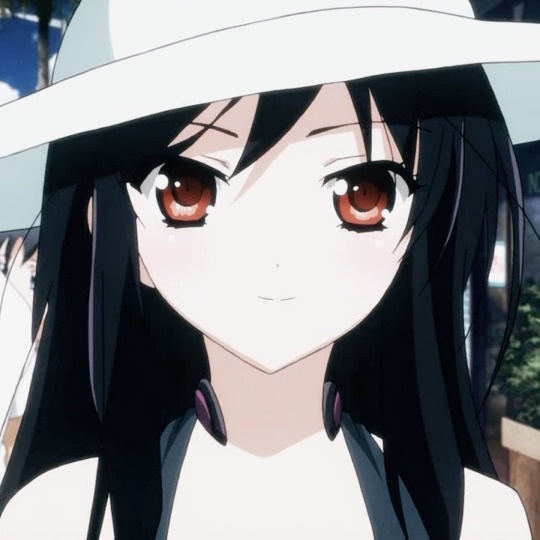
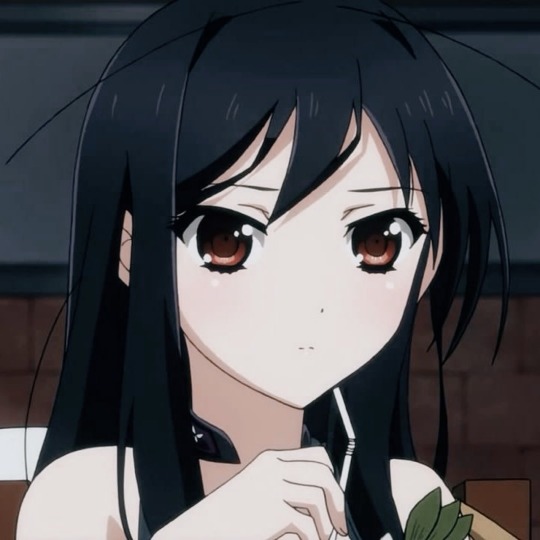
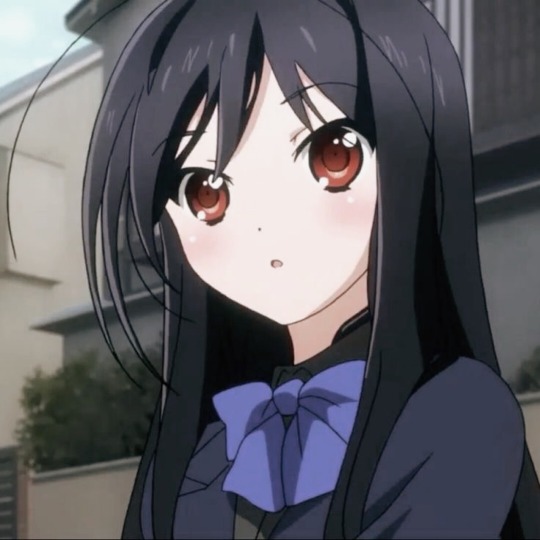


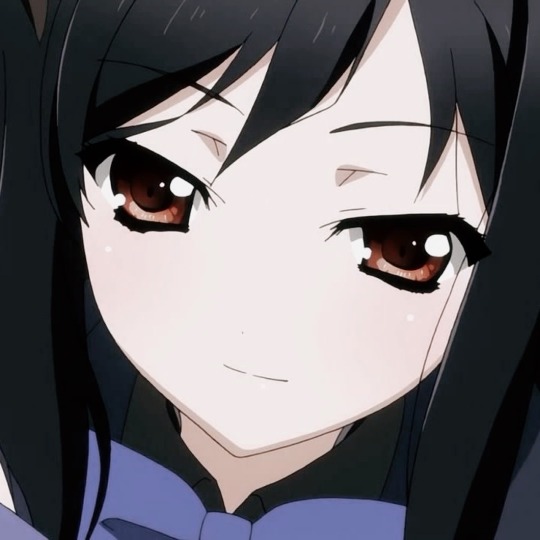



kuroyukihime from accel world
32 notes
·
View notes

